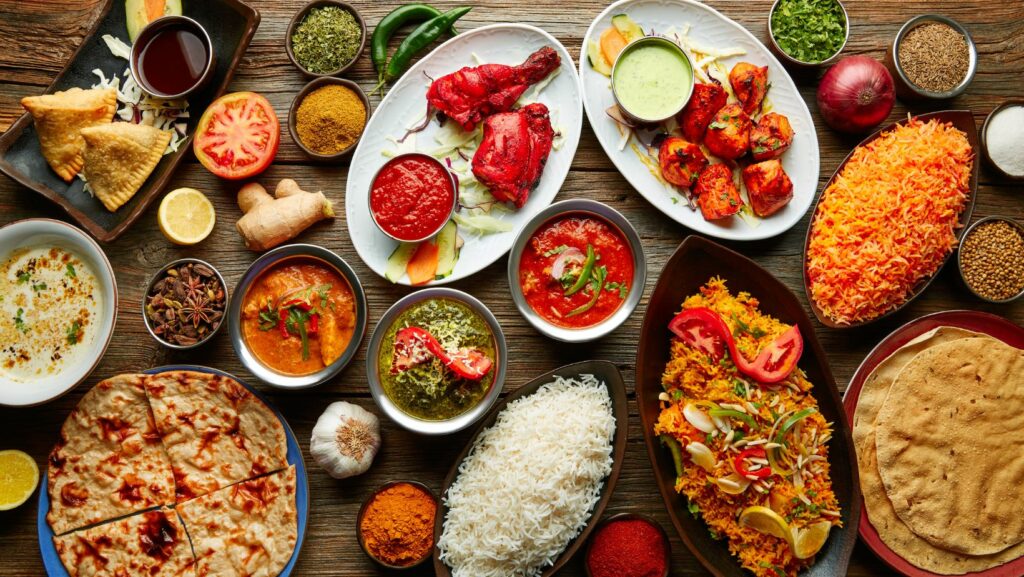Embarking on a culinary journey into the heart of India can be a vibrant, flavorful experience. But did you know it can also be a healthful one? Indian cuisine, with its rich array of spices and diverse ingredients, isn’t just about taste—it’s also about nourishment and wellness.
Healthy Recipes Indian
 A gastronomic delight, Indian cuisine blends a diverse range of ingredients. They contribute rich, spicy flavors that tantalize the palate while promoting wellness. Primarily, in health-packed Indian recipes, four essential components stand out – whole grains, lentils, vegetables, and spices.
A gastronomic delight, Indian cuisine blends a diverse range of ingredients. They contribute rich, spicy flavors that tantalize the palate while promoting wellness. Primarily, in health-packed Indian recipes, four essential components stand out – whole grains, lentils, vegetables, and spices.
Whole grains, such as brown rice and whole wheat flour, provide fiber, keeping the digestive system in check. For example, brown rice ‘pulao’ or ‘rotis’ made from whole wheat flour.
Lentils, packed with plant-based proteins, constitute the base of various Indian dishes like ‘dal’ or lentil soup.
Vegetables, abundant in Indian cuisine, serve as primary ingredients in diverse recipes such as ‘bhindi masala’ (okra curry) or ‘aloo gobhi’ (cauliflower and potato curry).
Last but never least, spices like turmeric and cumin are not just flavor enhancers. They’re known to have medicinal properties, often making their way into soups, stews, and a range of side dishes.
Each ingredient, meticulously selected, complements the other, creating an orchestra of flavors while encapsulating the essence of nutritional balance in these hearty Indian recipes.
Popular Healthy Indian Recipes
Indian cuisine, peppered with healthful ingredients and diverse spices, serves up many palatable, guilt-free recipes. Each recipe showcases hearty whole grains, protein-packed lentils, a bounty of vegetables and immunity-boosting spices, all melded in harmony to nourish the body and delight the senses.
One classic healthy Indian recipe is dal, a protein-rich lentil stew. Dal includes a variety of lentils, each offering different textures and flavors, but collectively providing ample fiber and protein. Turmeric, a key spice in this dish, gives a boost to immunity.
Chana masala, another popular choice, uses chickpeas as its heart. High in fibre and protein, chickpeas serve as a filling substitute for meat. This can be a great option, particularly for vegetarians.
Biryani, typically linked with indulgence, also has a healthy alternative. Opt for a version with brown rice, which brings about a heap of nutrients and fiber.
These recipes exemplify that Indian cuisine is not just palatable but also a reservoir of nutrition. Keeping the integrity of taste, each dish harbours wholesome ingredients that sync together, putting health at the heart of every bite.
Tips to Make Your Indian Recipes Healthier

Reducing oil intake is one step towards healthier Indian recipes. Indian cuisine involves a fair amount of oil, so substituting saturated and trans fats with heart-friendly options like olive oil, canola oil, or rice bran oil, helps lower cholesterol levels and improves overall heart health.
Scaling up on vegetables aids in increasing the nutritional value of any recipe. Vegetables, powerhouse of vitamins, minerals and fiber, should be incorporated abundantly in Indian dishes as in saag paneer, bhindi masala or vegetable biryani. More vegetables mean added fibers which can improve digestion and lower bad cholesterol.
Incorporating whole grains rather than refined grains in Indian food, tends to improve the health quotient of the recipes. Opting for whole wheat chapatis or brown rice, instead of white rice or white bread, boosts intake of complex carbohydrates which can sustain energy levels and keep one satiated for longer.
Using natural sweeteners instead of refined sugar can be a healthier choice. Natural sweeteners, like jaggery or honey, can replace sugar in sweets or beverages, providing necessary sweetness while maintaining lower glycemic index levels.
Keeping salt intake in check safeguards against hypertension. Lowering the salt quantity in recipes, or replacing it with herbs and spices could be one viable step. A variety of spice-rich Indian dishes like sambar, dal or rasam, can afford this salt reduction without compromising flavors.
These strategic modifications ensure that Indian recipes remain nutrient-rich, while retaining their traditional flavors, enhancing both health and culinary satisfaction.

